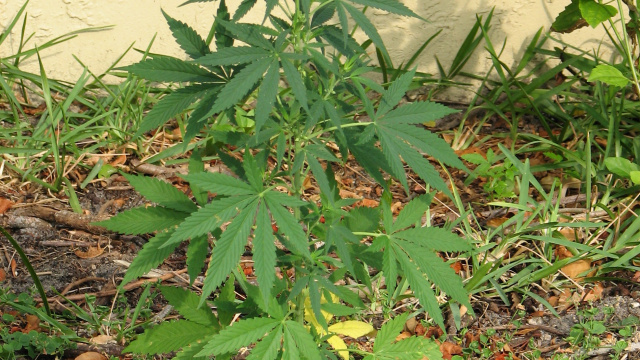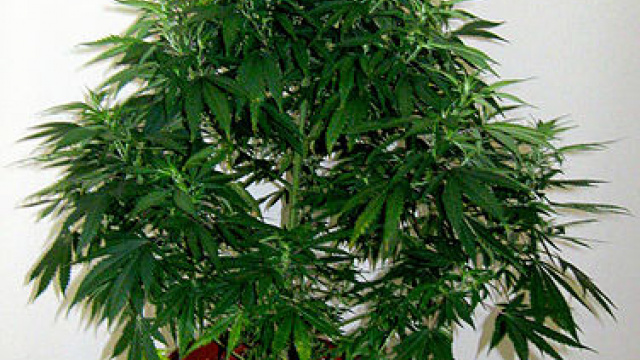 The state would license 334 pot stores, including at least 21 in Seattle and 61 in King County, under revised state rules for a recreational marijuana system. Total pot production would be capped at 40 metric tons next year in rules approved Wednesday by the state Liquor Control Board.
The state would license 334 pot stores, including at least 21 in Seattle and 61 in King County, under revised state rules for a recreational marijuana system. Total pot production would be capped at 40 metric tons next year in rules approved Wednesday by the state Liquor Control Board.
The cap is intended to meet anticipated consumer demand that would roughly equal 25 percent of the total state market for legal recreational, medical and illicit-market marijuana.
State officials expect recreational weed to gain market share over time, as they modify the system to better compete on price, quality and convenience with the medical and illicit markets.
The production cap helped determine the number of stores and limits on the amount of pot that growers could produce. Under the revised rules, growing facilities could be up to 30,000 square feet, or almost three-quarters of an acre.
In a stab at keeping the industry from concentrating in the hands of a few big players, the rules say no entity could hold more than three licenses in each of the producer, processor and retail categories.
Alison Holcomb, chief author of the state’s recreational-pot law, praised the revised rules as thoughtful and responsive.
“Other states and nations are already reviewing Washington state’s work for guidance in shaping new, and sound, marijuana policies in their communities,” said Holcomb, who has visited Uruguay to advise officials there on legalization.
But the rules were met by some criticism. They would favor indoor growing, and its large carbon footprint, over more environmentally beneficial sun-grown pot, according to some.
After holding public hearings next month, the board is expected to formally adopt the rules, which could be effective as early as mid-November. Following background checks and other state scrutiny, licenses would be issued, crops grown and stores open by June, if not sooner.
The revised rules come less than a week after the federal Department of Justice indicated it would let Colorado and Washington proceed with tightly regulated legal pot markets, as long as they adhered to certain priorities, such as keeping their weed from leaking into other states, or into the hands of minors.
The draft rules already mirrored the federal government’s priorities and were not changed by last week’s news out of Washington, D.C.
“I think we all breathed a sigh of relief,” said board member Chris Marr about how closely aligned the state rules and federal priorities appear to be.
Retail stores would be allocated by population and accessibility, in a system similar to the one used for defunct state liquor stores. That system sought to have stores within a 15-minute drive for 95 percent of the population.
After feedback from entrepreneurs and consumers, the Liquor Control Board relaxed some draft proposals in hopes of encouraging stores in dense urban neighborhoods such as Seattle’s Capitol Hill.
The voter-approved recreational-pot law restricts locations by requiring a 1,000-foot buffer between marijuana facilities and venues frequented by youth, such as schools and parks.
The board changed the way the 1,000 feet is calculated, opting to use the most common path between a pot facility and a youth venue, rather than a straight-line measurement.
Sharon Foster, the board chair, offered the example of a potential growing facility that was 995 feet from a school, but a person would have to cross a freeway to maintain that distance. “That’s when we looked at common path of travel,” Foster said.
The draft rule was “absurd” because of such examples, said Ryan Espegard, a Seattle attorney whose firm advises pot entrepreneurs and advocated for the common-path measurement.
Under the proposed allocation of stores, the board assigned a certain number to each county.
Some rural counties — Columbia, Ferry, Garfield — each were allotted just one store.
In addition to King County’s 61 stores, Snohomish County was allocated 35 stores, Pierce County 31 stores and Spokane County 18 stores.
Within more populous counties, the state allocated stores to certain cities, and left a number of stores “at-large” meaning they could go where they were welcome within a county.
It did not specify exactly where in counties and cities the stores could set up.
A number of cities, including Kent and University Place, are opposed to legal pot commerce and have created zoning barriers and other impediments.
State officials allocated three stores to Kent, the state’s sixth-largest city, and one to the smaller University Place near Tacoma.
Board officials made it clear that licensees would need approval from the cities they wanted to locate in. And if cities continue their resistance it sets up a potential legal battle between a state-licensed store and reluctant city. “Ultimately, it’s an issue between the applicant and local jurisdiction,” said Alan Rathburn, the board’s licensing director.
Randy Simmons, the state’s marijuana project director, said coming up with the consumption estimate was the toughest task the state has tackled so far.
Simmons called it a “razor’s edge” calculation. If the state underestimated it could encourage consumers to buy from the illicit market; if it overestimated then a surplus of legal pot might leak into other states.
Because the size of farms are capped at 30,000 square feet, some believe the revised rules favor indoor growing, which can produce four crops a year, over outdoor growing, which is limited to two harvests.
“Who wins? The person with the lights on,” said Okanogan County activist Jeremy Moberg, who advocates for sun-grown pot.
A peer-reviewed study in a scientific journal last year reported that producing a kilo of energy-intensive indoor pot leaves a carbon footprint equivalent to driving across the country seven times.
Simmons said the rules give indoor growing an inadvertent edge.
“It wasn’t the intent of the policy,” he said; the intent was to cap the size of growing operations so they weren’t dominated by big businesses.
Simmons said an adjustment in the rules might be necessary to level competition between indoor and sun-grown weed.
“This is just one juncture of many as we move through changes to tweak and improve the system,” said board member Ruthann Kurose of the revised rules.
The Liquor Control Board allocated marijuana retail stores based mostly on population. Here is a partial list of the stores allocated in the Seattle-Tacoma area:
King County 61
Seattle 21
At large 11
Bellevue 4
Kent 3
Federal Way 3
Renton 3
Shoreline 2
Redmond 2
Kirkland 2
Auburn 2
Snohomish County 35
At large 16
Everett 5
Marysville 3
Lynnwood 2
Edmonds 2
Kitsap County 10
At large 7
Bremerton 2
Bainbridge Island 1
Pierce County 31
At large 17
Tacoma 8
Puyallup 2
Lakewood 2
Source: Liquor Control Board
Source: Seattle Times (WA)
Author: Bob Young, Seattle Times Staff Reporter
Published: September 5, 2013
Copyright: 2013 The Seattle Times Company
Contact: [email protected]
Website: http://www.seattletimes.com/



Leave a Reply